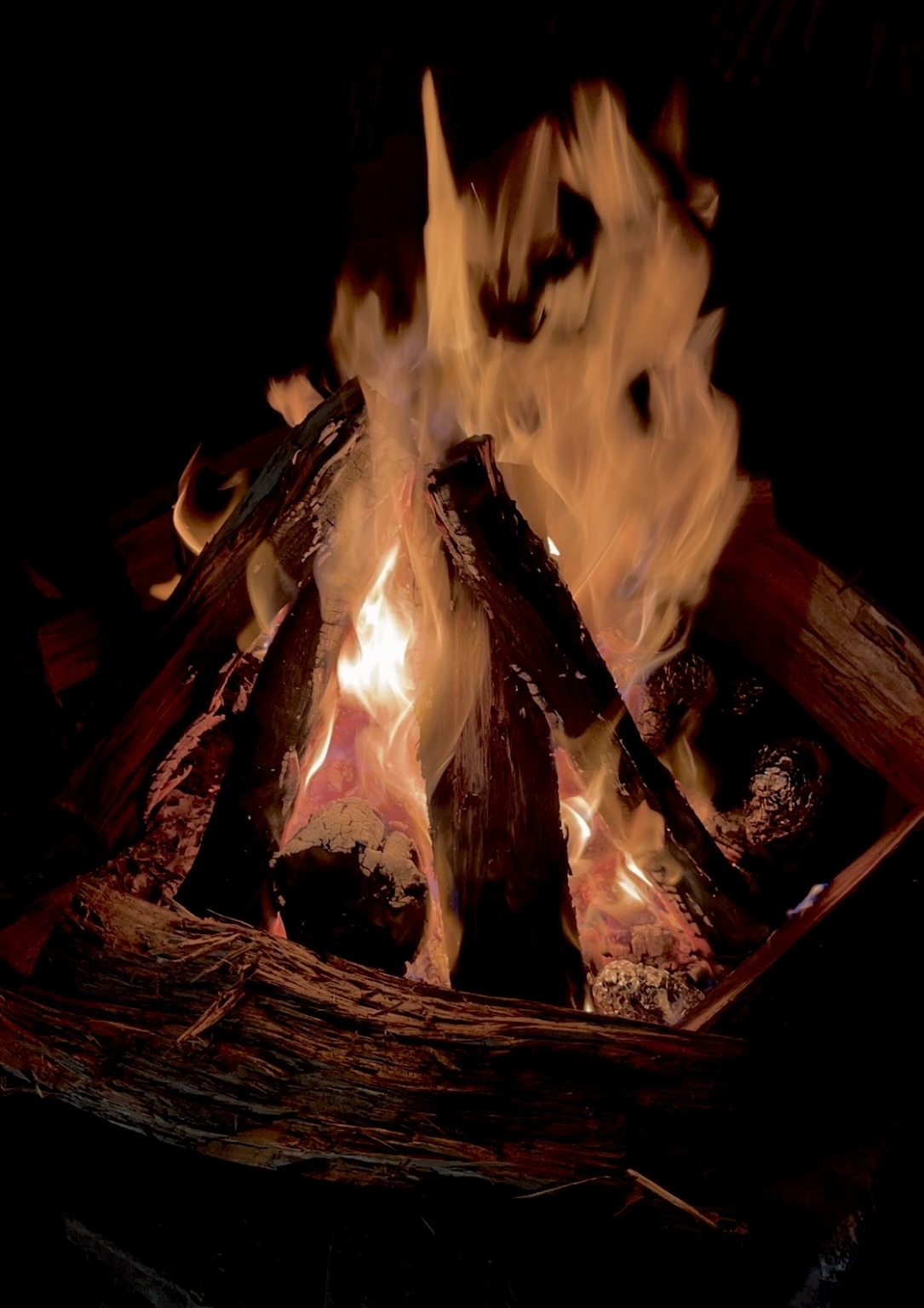As the days grow shorter and the nights stretch longer, many people find themselves drawn to the mysteries of the season. There’s something about autumn that invites introspection, a time to reflect on the past and consider what lies ahead. For those familiar with Samhain, this ancient festival offers more than just the opportunity to don costumes and carve pumpkins. Samhain is a time steeped in tradition, marking the end of the harvest and the beginning of the darker half of the year. But beyond its historical and cultural significance, Samhain also presents a powerful opportunity for personal growth through shadow work.
Shadow work might sound a bit intimidating at first—after all, who really wants to confront their inner demons? But trust me, this practice can be incredibly transformative. By facing the parts of yourself that you usually keep hidden away, you can heal old wounds, release buried emotions, and ultimately live a more authentic life. And there’s no better time to dive into this work than during Samhain, when the veil between the worlds is said to be at its thinnest, making it an ideal time for introspection and spiritual growth.
Why During Samhain?
Samhain, often pronounced “Sow-in” or “Sah-win,” is one of the most significant festivals in the Celtic calendar. Traditionally celebrated from October 31st to November 1st, Samhain marks the end of the harvest season and the beginning of winter. It’s a time when the boundary between the living and the dead is believed to blur, allowing spirits to cross over into our world. While this might sound a bit spooky, Samhain is actually a time for honoring ancestors and reflecting on the cycle of life, death, and rebirth.
Over the centuries, Samhain has evolved and blended with other traditions, most notably influencing Halloween as we know it today. But while Halloween often focuses on the fun and festive, Samhain has deeper, more spiritual roots. For many, it’s a time for rituals that honor those who have passed, celebrate the harvest, and prepare for the long winter ahead. Whether through lighting bonfires, setting a place at the table for departed loved ones, or simply spending time in quiet reflection, Samhain offers a rich tapestry of practices that can help us connect with the past and prepare for the future.
In modern times, Samhain has been embraced by those following Pagan and Wiccan traditions, but its themes of reflection, gratitude, and transformation are universal. It’s a time to slow down, turn inward, and consider the cycles of your own life. And, as we’ll explore, it’s also a perfect time to engage in shadow work, using the energy of the season to confront and heal the parts of yourself that you may have long neglected.
The Concept of Shadow Work
Before diving into how Samhain and shadow work go hand in hand, let’s take a moment to understand what shadow work actually is. The term “shadow” in this context comes from the work of Carl Jung, a renowned Swiss psychiatrist who believed that everyone has a “shadow”—a part of their psyche that consists of the unconscious mind, including repressed weaknesses, desires, and instincts. In simpler terms, your shadow is the part of yourself that you don’t usually show to the world, the side of you that you might even try to hide from yourself.
Shadow work involves bringing these hidden aspects of yourself to light. It’s not about judging or rejecting these parts but rather understanding and integrating them. By acknowledging your shadow, you can uncover deep-seated fears, unresolved trauma, and limiting beliefs that might be holding you back. This process can be challenging—after all, who enjoys digging into the less-than-pleasant parts of their personality? But it’s also incredibly rewarding, leading to greater self-awareness, emotional healing, and personal growth.
Think of shadow work as a kind of emotional or spiritual housekeeping. Just like you wouldn’t want to live in a house where you’ve shoved all the dirt into the corners and closets, you don’t want to ignore the emotional “dust” that accumulates in your mind and heart. By engaging in shadow work, you can clear out that clutter, leading to a more balanced and fulfilling life. And while shadow work can be done at any time, the introspective energy of Samhain makes it an especially potent time to dive into this practice.
The Intersection of Samhain and Shadow Work
So, how exactly do Samhain and shadow work intersect? The connection lies in the themes of darkness, transformation, and introspection that both share. Samhain, with its focus on the transition from light to dark and its association with the spirit world, naturally lends itself to the deep inner work that shadow work entails.
During Samhain, the symbolic significance of darkness takes on new meaning. In many traditions, the dark is not something to be feared but embraced. It represents the unknown, the hidden, and the potential for new beginnings. Just as the earth goes through a period of dormancy in the winter, allowing for growth and renewal in the spring, you too can use this time to explore the “dark” parts of your psyche, with the goal of emerging more whole and self-aware.
Samhain is often seen as a time when the veil between worlds is thin, making it easier to connect with the spirit realm. This thinning of the veil can also be seen metaphorically as an opportunity to connect more deeply with your own subconscious mind. Just as the spirits of ancestors might be more accessible during Samhain, so too might the buried parts of yourself—the emotions, memories, and aspects of your personality that you’ve kept hidden away. This is the perfect time to invite those parts to come forward, not with fear, but with compassion and curiosity.
The rituals and symbols associated with Samhain can also be powerful tools for shadow work. For instance, you might use candle magick to light your way as you explore your shadow, symbolizing the illumination of hidden truths. Or, you could create an altar that honors both your ancestors and the parts of yourself that you’re ready to confront and heal. By weaving the themes of Samhain into your shadow work practice, you create a rich, symbolic experience that can deepen your self-exploration and healing.
Practical Guide to Shadow Work During Samhain
If you’re ready to dive into shadow work this Samhain, here’s a step-by-step guide to help you get started. Remember, shadow work is deeply personal, so feel free to adapt these suggestions to suit your needs.
Step 1: Set Your Intention
Before you begin, take some time to reflect on what you hope to achieve through your shadow work. What aspects of yourself are you ready to explore? Setting a clear intention can help guide your process and keep you focused. Write down your intention or say it aloud as part of a ritual.
Step 2: Create a Sacred Space
Find a quiet, comfortable space where you won’t be disturbed. This could be a room in your home, a spot in nature, or even just a cozy corner where you can light a candle and sit quietly. Consider incorporating Samhain symbols, such as pumpkins, autumn leaves, or photos of loved ones who have passed, to create a connection to the season.
Step 3: Journaling
Journaling is one of the most effective tools for shadow work. Start by writing about the parts of yourself that you usually keep hidden. You might ask yourself questions like, “What am I afraid to acknowledge about myself?” or “What patterns keep repeating in my life, and why?” Don’t censor yourself—this is a space for honesty and exploration.
Step 4: Meditation and Visualization
Meditation can help you access deeper layers of your subconscious mind. Try a guided meditation focused on shadow work or create your own visualization. Imagine yourself descending into a cave or a dark forest, where you meet the parts of yourself that you’ve been avoiding. Approach these aspects with compassion, and ask what they need from you to heal.
Step 5: Rituals and Symbolism
Incorporate Samhain rituals into your shadow work. For example, you might perform a simple candle ritual, lighting a candle to symbolize bringing light to your shadow. As the candle burns, focus on releasing old patterns and inviting healing. You could also create a Samhain altar with items that represent the parts of yourself you’re working on.
Step 6: Integration and Reflection
After your shadow work session, take some time to reflect on what came up. How do you feel? What insights did you gain? It’s important to integrate what you’ve learned, rather than just leaving it behind. Consider creating an action plan for how you’ll continue to work with these insights in your daily life.
Step 7: Seek Support
Shadow work can be intense, and it’s okay to seek support if you need it. This might mean talking to a trusted friend, working with a therapist, or joining a community of like-minded individuals who are also on their shadow work journey.
By combining the introspective energy of Samhain with the transformative power of shadow work, you can create a powerful experience that helps you confront your inner demons and move forward with greater self-awareness and healing.
Common Challenges and How to Overcome Them
Engaging in shadow work during Samhain—or at any time—can be incredibly rewarding, but it’s not without its challenges. Confronting the hidden parts of yourself can stir up uncomfortable emotions and old wounds. Here are some common challenges you might encounter and how to overcome them.
Fear and Resistance
It’s natural to feel afraid or resistant when you first start shadow work. After all, who really wants to dig into the darker parts of their psyche? You might find yourself wanting to avoid the work altogether, or you might start but then back off when things get tough. This resistance is a defense mechanism, and it’s important to acknowledge it without letting it control you.
One way to overcome fear and resistance is to take things slowly. You don’t have to dive into the deepest, most painful parts of your shadow all at once. Start with something small and manageable, and gradually work your way up. Remind yourself that the purpose of shadow work is healing, not punishment. Approach it with self-compassion and patience.
Dealing with Intense Emotions
Shadow work can bring up intense emotions—anger, sadness, guilt, and shame are all common. It’s important to create a safe space for these emotions to surface. If you find yourself feeling overwhelmed, take a break. Practice grounding techniques like deep breathing, spending time in nature, or engaging in activities that bring you comfort.
Remember, it’s okay to feel these emotions. They’re a natural part of the healing process. If you find that your emotions are too overwhelming to handle on your own, consider seeking support from a therapist or counselor who is experienced in shadow work or trauma-informed care.
Seeking Support and Managing Expectations
While shadow work is deeply personal, you don’t have to go through it alone. It can be helpful to talk about your experiences with someone you trust, whether that’s a friend, a therapist, or a spiritual advisor. Sharing your journey can provide a sense of connection and validation.
It’s also important to manage your expectations. Shadow work is not a quick fix—it’s a lifelong process. You’re not going to “solve” your shadow in one Samhain season. Be patient with yourself, and recognize that every step forward is progress, no matter how small it might seem.
Integrating Shadow Work into Daily Life Beyond Samhain
While Samhain is a powerful time to begin or deepen your shadow work, the insights and growth you gain shouldn’t be left behind once the season changes. The real power of shadow work comes from integrating what you’ve learned into your daily life. Here’s how you can carry the lessons of Samhain with you throughout the year.
Daily Practices for Self-Awareness
One of the simplest ways to keep shadow work alive in your daily life is through regular self-reflection. This doesn’t have to be anything formal—just a few minutes each day to check in with yourself. How are you feeling? What thoughts or patterns are coming up for you? Are there any aspects of your shadow that are seeking attention?
Journaling, meditation, and mindful observation of your thoughts and emotions are all excellent tools for maintaining self-awareness. By making these practices a regular part of your routine, you’ll continue to uncover and integrate different aspects of your shadow.
Balancing Light and Dark Aspects of the Self
Shadow work is about integrating, not eradicating, the darker parts of yourself. It’s important to remember that everyone has both light and dark aspects, and both are necessary for a balanced life. The key is to recognize when your shadow is taking over and to bring it back into balance with the lighter aspects of your personality.
This might mean practicing more self-compassion when you notice self-critical thoughts, or setting boundaries when you feel anger or resentment building up. By acknowledging and working with both sides of yourself, you’ll cultivate a more harmonious and authentic way of being.
Ongoing Growth and Healing
Shadow work is an ongoing journey. There’s always more to uncover and integrate, but that doesn’t mean you need to be constantly digging into the past. Give yourself permission to take breaks, to rest, and to enjoy the process. Growth and healing happen over time, and each step you take is a step toward a more whole and authentic self.
As you can see, Samhain offers a unique and powerful opportunity to engage in shadow work, helping you confront and heal the parts of yourself that are often hidden away. By aligning with the energy of the season, you can use this time to reflect on your life, release what no longer serves you, and set the stage for new growth in the months ahead.
Remember, shadow work isn’t about perfection—it’s about acceptance and integration. It’s about learning to love and accept all parts of yourself, even the ones that are difficult to face. And while the journey can be challenging, it’s also deeply rewarding, leading to greater self-awareness, emotional healing, and personal empowerment.
As you move forward, I encourage you to carry the lessons of Samhain and shadow work with you throughout the year. Keep exploring, keep reflecting, and most importantly, keep showing up for yourself with compassion and courage. The more you engage with your shadow, the more you’ll discover the light that lies within.
















